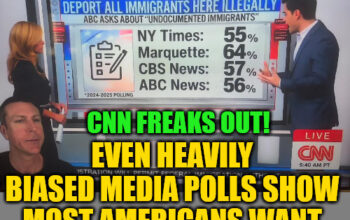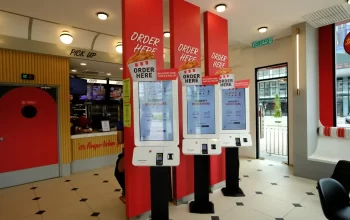Viva Calle is a great event sponsored by the city of San Jose. It is meant for the whole community, young and old. Now, it could be gone. Why? Look for the union label.’
“Viva Calle returns for the final installment of the year Sunday. The event will shut down about six miles of streets to traffic through Japantown, Kelley Park and Tamien Park for residents to bike, walk and enjoy food trucks, live music and activities along the way.
But it will be bittersweet. The city plans to cut the days it shuts down streets to traffic from three to two, and cut 25% of Viva Parks events in primarily underserved neighborhoods from a $1.1 million slash to the parks program to budget for new union deals.
Last month San Jose staved off a looming strike from the city’s two largest unions representing 4,500 local workers—IFPTE Local 21 and AFSCME Local 101—after a stalemate over salary negotiations. The two parties reached an agreement Aug. 14, hours before the largest city walkout in years was set to begin.”
When unions win, families, businesses and the community loses. Yet, the voters continue on the road to suicide.
San Jose’s Viva Calle faces chopping block—because of UNION Pay Raises

by Ben Irwin, San Jose Spotlight, 9/8/23 https://sanjosespotlight.com/san-joses-viva-calle-parks-program-faces-chopping-block-budget-cuts/
San Jose is planning cuts to a beloved parks program to compensate for raises for its unionized workers—a move that leaders warned would happen in the wake of contentious contract negotiations.
Viva Calle returns for the final installment of the year Sunday. The event will shut down about six miles of streets to traffic through Japantown, Kelley Park and Tamien Park for residents to bike, walk and enjoy food trucks, live music and activities along the way.
But it will be bittersweet. The city plans to cut the days it shuts down streets to traffic from three to two, and cut 25% of Viva Parks events in primarily underserved neighborhoods from a $1.1 million slash to the parks program to budget for new union deals.
Last month San Jose staved off a looming strike from the city’s two largest unions representing 4,500 local workers—IFPTE Local 21 and AFSCME Local 101—after a stalemate over salary negotiations. The two parties reached an agreement Aug. 14, hours before the largest city walkout in years was set to begin.
Mayor Matt Mahan opposed the strike settlement, which includes a 14.5% raise over the next three years and an increased paid family leave to eight weeks. Other previously approved contracts will also be amended. Mahan reiterated throughout negotiations that the city could not afford to give the two unions what they’d asked for without making cuts to critical city services.
“The proposed cuts for this year, which include crossing guards, traffic safety measures and Viva Calle, are particularly disheartening because we could have avoided them while still offering a generous 13% salary increase to city workers,” Mahan told San José Spotlight.
Councilmembers David Cohen, Pam Foley and Sergio Jimenez have put forth an alternative plan that could be used to keep some funding in parks and ideally a third Viva Calle event. The proposal is to cut every council district’s funding by $10,000, the mayor’s by $100,000 and reroute that money into the parks department, according to a memo issued Friday.
“We have heard from many residents about the importance of Viva Calle and Viva Parks,” the memo reads. “While we look to reduce the overall number of Viva Parks events, let us reinvest the additional savings toward a third Viva Calle event, and any shortfalls can be addressed through private donations and sponsorship opportunities.”
Viva Calle is just the beginning of future service cuts due to the unions’ three-year deal with the city, Mahan said. Staff reports indicate the city may face double-digit shortfalls in the general fund if economic conditions do not improve.
“These deficits will force much more painful cuts to city services that will reduce quality of life for our residents and slow our efforts to end homelessness,” Mahan said.
Viva Parks started in 2015 as a way to breathe life back into San Jose’s parks in underserved neighborhoods through free events focused on health and wellness, physical activity and community engagement. Ed Solis, formerly San Jose’s recreation superintendent as of his retirement last month, spent the last eight years with the city getting the parks programs off the ground. He said Viva Parks events serve up to 500 people a week and seeing them on the chopping block is hard to watch—the program is set to be highlighted next month at a national conference as a model program for equity and accessibility in underserved communities.
“(Viva Parks) is about something that is equitable,” Solis told San José Spotlight. “You hear about (equity) throughout Silicon Valley … this is equity. This is accessibility, this is everything the city says we’re about.”
Solis’ retirement followed the San Jose City Council’s 2022 decision to include Viva Parks in the budget after years of his team scrapping for its own funding. He said it could be years until the city chooses to reinvest in its parks programs again.
“It’s a very deep cut,” Solis said. “That team will be (understaffed) until somebody prioritizes them, somebody advocates and pushes and it gets back into the priority of things, which it wasn’t for eight years.”
Helen Chapman, a longtime parks advocate and former city parks commissioner, said she’s disappointed to see the city target parks and Viva Calle after all the advocacy to get those programs launched in neighborhoods that don’t historically have access to these opportunities.
“(Viva Calle) is a fun day. It turns San Jose into a playground for a couple hours,” Chapman told San José Spotlight. “In 2008, (parks) took a big hit in the budget from the economic downturn and they still haven’t recovered fully from that … I’m greatly disappointed to see the city administration is again, looking at the parks budget.”
Solis said Viva Calle is more than just creating a six-mile stretch for people to ride bikes.
“LA does 10 a year … Cities with a real vibrant street program, they understand the benefits,” Solis said. “It’s not just the bikes, it’s the impact to the local economy. You see seniors and children … it’s creating a six-mile park for everyone to enjoy.”



